Tens of thousands of Afghan allies were left behind. Why have so few reached US safety?
With the Taliban searching their Kabul neighborhood, Tamim Bedar’s children cried as his wife urged him to board a U.S. evacuation flight alone. He was the target, she said. They would follow.
Bedar, 42, in danger after years of work supporting U.S. goals in Afghanistan, reluctantly flew to the safety of a U.S. base in Qatar. Frantically working his contacts, he got his wife and four kids out a week later.
But his 36-year-old brother, also at risk because of his security jobs with a U.S.-based organization and the Afghan government, failed to reach the airport before the evacuation ended – and today is among thousands who supported U.S. goals but remain stuck in Afghanistan.
“Those who were lucky ... they made it,” Bedar told USA TODAY at his home in Louisville, Kentucky, where he was resettled. “Others, they were left behind.”
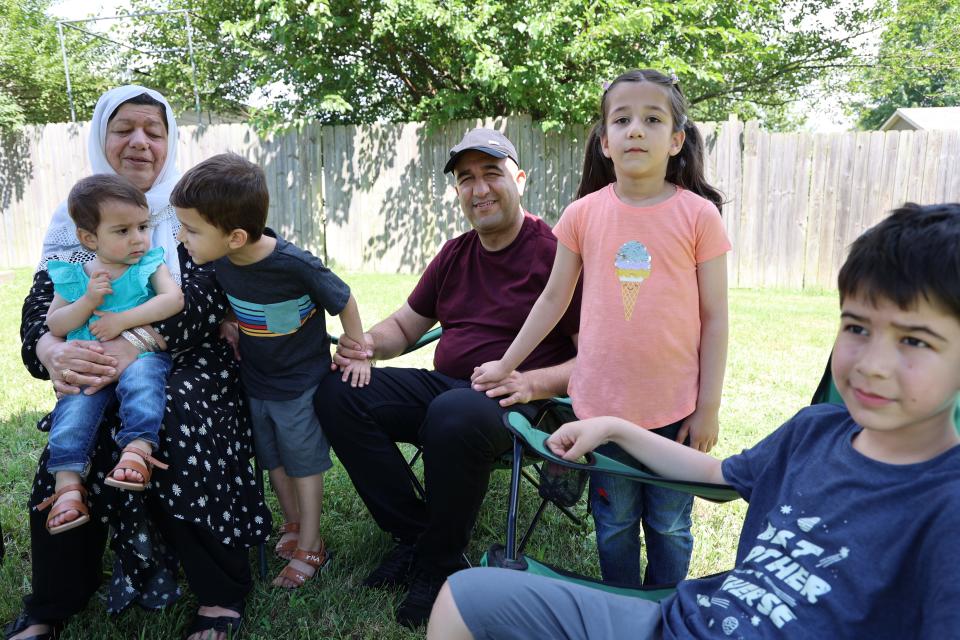
One year after the U.S. evacuated more than 76,000 Afghans to the United States at the end of its 20-year war, refugee advocates say tens of thousands of Afghan allies who would likely qualify for U.S. protection – reaching into the hundreds of thousands when their family members are included – are still struggling to reach safety.
Despite recent U.S. efforts to speed relocations, their paths have been bogged down by bureaucratic backlogs, humanitarian parole denials and the logistical barriers of third-country visa processing in the absence of a U.S. Consulate in Afghanistan, advocates say.
Bedar's brother, for example, lacks the means to travel to another country and to wait months or years for an uncertain U.S. admission decision.
“The stark reality is that we left a stunning number of Afghan allies behind,” said Krish O'Mara Vignarajah, president of the Lutheran Immigration and Refugee Service, who argued the U.S. “is still struggling to keep its promise to those who served alongside us in America's longest war.”
Afghanistan, one year later:
One year after US withdrawal, what life is like in Afghanistan today
Ex-President Ashraf Ghani explains why he fled as Taliban moved in
A timeline of the US withdrawal and Taliban recapture of Afghanistan
It's not clear exactly how many Afghans and their families remain at risk in Afghanistan or third countries after working for the U.S. government, media, and Western-backed aid groups or organizations supporting U.S. goals, such as democracy and women’s rights.
But there could be 200,000 to 300,000 people, including family members, who would qualify for special immigrant visas or a priority refugee resettlement program, said Shawn VanDiver, founder of #AfghanEvac, a coalition of veterans, nonprofits, current and former national security and intelligence members, and congressional staffers.
Many of those Afghans risked their lives during the war to work for the U.S. military as interpreters and in other roles.
The Biden administration has sought to accelerate processing through various immigration channels, adding staff and easing several criteria that critics said were unnecessary barriers. Since late March, the U.S. has also supported travel for about 5,500 eligible Afghans on relocation flights from Kabul, according to the State Department.
This week, lawmakers in Congress introduced the Afghan Adjustment Act, which would allow those evacuated to the U.S. a year ago under temporary humanitarian parole – as the vast majority were – a path to permanent status rather than having to apply for asylum in a backlogged system.
Secretary of State Antony Blinken has said the U.S. remains “committed to our Afghan allies.”
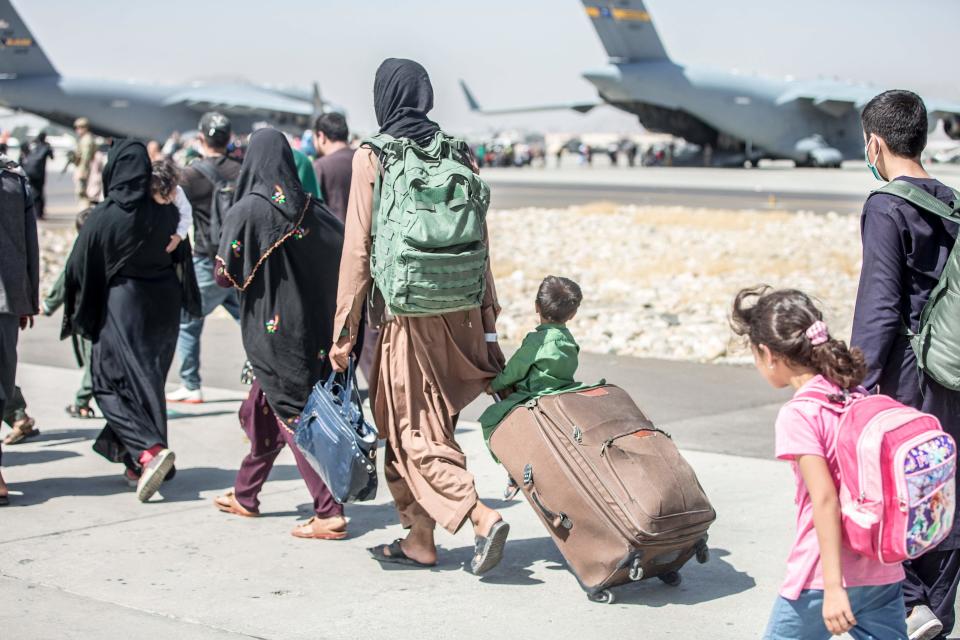
But refugee advocates say the efforts so far fall short of the need, with thousands still languishing in Afghanistan amid fear of the Taliban, joblessness and an economic crisis that has fueled widespread hunger.
Since the Taliban`s takeover of Afghanistan, more than 100 former government employees, security guards and individuals who worked with U.S. or other foreign militaries have been killed by the militant group. Some U.S. veterans groups have scrambled to help their former Afghan friends and colleagues go into hiding.
VanDiver and others said more needs to be done to accelerate the pace of U.S. relocations of at-risk Afghans and separated family members.
While it's happening, he said, "it's not enough."
'A SELF-INFLICTED WOUND': US withdrawal still haunts Biden's presidency
LATEST: Despite drone strike on al-Qaida leader, many fear Afghanistan remains haven for terror
A difficult path to US
Lailma Ibrahim Khil, a 34-year-old Afghan mother of eight, keeps a pair of children’s shoes in her apartment in San Diego that she got on a U.S. military base. She’s saving them for her 5-year-old daughter, Khalida, among four of her children stranded in Afghanistan with her husband.
“Whenever I see the shoes, it makes me all the time cry,” she said by phone recently, translated by an Afghan community member.
When the Taliban retook control last year, Ibrahim Khil feared retribution for working for BRAC, an aid group founded in Bangladesh with an arm in the United States. She and her husband took their children to Kabul’s airport, ringed by panicked crowds, Taliban checkpoints and outbreaks of violence.
Amid the chaos, her children were separated between her and her husband. She waited days before taking a flight, figuring her husband would follow.
A year later, she’s happy the four children with her are safe, can attend school and have other opportunities. But she worries about her other four children and doesn't know whether her attempts to bring her family to the U.S. will ever succeed. It's such a strain, she said, she sometimes wants to go back.
Afghans can come to the U.S. through a series of programs, which include:
The Special Immigrant Visa program for those who worked for the U.S.
A priority refugee program for those with ties to U.S.-affiliated organizations, programs and media, multinational forces as well as others considered at risk from the Taliban.
The regular refugee resettlement program.
Through humanitarian parole, a temporary status that Khil and the majority of evacuated Afghans came through a year ago.
But since the evacuation, a host of challenges have made those pathways difficult to access, said Spojmie Nasiri, an immigration attorney and board member of the Afghan-American Community Organization.
Parole applicants have faced both long processing times and high denial rates. Of the 46,000 Afghans who have applied for parole since the evacuation, fewer than 5,000 of these cases were fully adjudicated by June, and only 297 were approved, according to the Migration Policy Institute.
This year, the government expanded eligibility so that applicants could show they are part of a targeted group, rather than having to document an individualized threat. That could raise approvals, but the program still faces long backlogs, said Julia Gelatt, a senior policy analyst at the Migration Policy Institute.
From last August through July, the U.S. has also issued visas to about 8,000 SIV applicants and their family members, according to the State Department, for a total of 15,000 since Biden took office. But more than 74,000 applicants are in some stage of the application process, a figure that doesn't include family members.
While some are chosen for U.S.-supported relocation flights from Kabul, most SIV applicants need to reach a third country for processing and approvals that can take 18 months. Trying to flee Afghanistan now can be dangerous and difficult.
Among the 44,000 referred to the priority refugee designation, about half have applications deemed complete, according to the State Department. But that's not the end of the process, which also takes up to 18 months after reaching a third country.
As of last month, 971 Afghans had been admitted under the regular U.S. refugee resettlement program since last October. That program also requires long waits.
Aside from a "golden ticket" on the relatively few U.S. relocation flights, those in Afghanistan must overcome the often prohibitively expensive obstacle of reaching a nearby country that will allow them in, and then endure long, anxiety-filled waits for interviews at swamped U.S. embassies, said Erol Kekic, senior vice president of Church World Service.
"It becomes a difficult challenge," he said. "And a choice that is hard to make."
As the Taliban took over, chaos unfolds at the airport
Rescue missions: How an ad hoc group rescued thousands of Afghans left behind
Chaos at Kabul airport : Questions raised over US evacuation effort
US seeks to speed processing, aid parolees
The Biden administration, which inherited a refugee program hobbled by the pandemic and slashed by former President Donald Trump, has taken steps meant to increase relocations of former Afghan allies.
Along with changes impacting parole eligibility, the administration has bolstered staff and streamlined the SIV program and other processing. The Department of Homeland Security also announced several exemptions to avoid automatically barring admissions for certain Afghans under anti-terrorism rules, such as those who worked as civil servants under the Taliban before 2001.
The State Department added consular staff in Qatar and the U.S. Embassy in Islamabad, Pakistan. And it set a goal of processing some refugee applications in as few as 30 days, though it’s not clear how often that goal is being met.
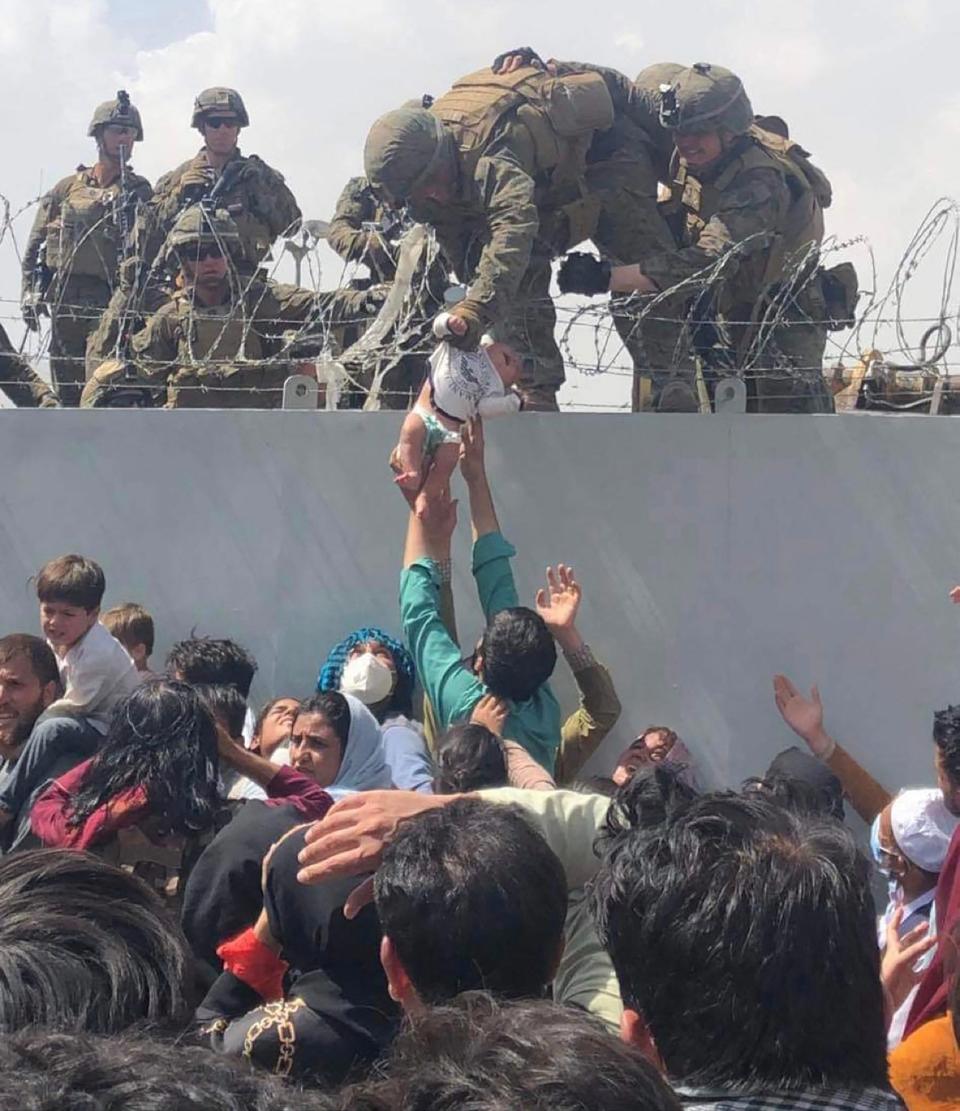
While refugee advocates say those are positive steps, some said they haven't yet produced a big increase in arrivals. Processing times for SIV applicants fell by 20% between the first and second quarters of the fiscal year, federal figures show, but it still took more than a year and a half.
"We need to resume the sense of urgency that we had a year ago," O'Mara Vignarajah said.
VanDiver called for expanding relocation flights from Kabul, creating several new rapid-processing centers like the one in Qatar, and ramping up the number of family reunifications.
Supporters of the Afghan Adjustment Act say that, along with creating a pathway to permanent status for Afghans already here, the measure would expand SIV eligibility to include omitted groups such as the Afghan Air Force and Special Operations Command. It also forms a task force to implement ways to support SIV-eligible Afghans outside of the United States.
"There are allies and vulnerable Afghans who are desperately trying to leave their crumbling nation, and who live under great risk," said Republican Sen. Lisa Murkowski of Alaska, a sponsor of the bill, in a statement. "The United States must ensure that we keep our promises to our Afghan allies, and provide certainty for those who fled to the United States and have no place to return."
Chris Purdy, director of Veterans for American Ideals, part of the refugee advocacy group Human Rights First, said the need to accelerate efforts to bring Afghans who supported the U.S. mission to safety is underscored by the heart-wrenching emails he gets seeking help.
“We're talking about people who are starving, or being persecuted, who are suffering from economic collapse and not working,” he said. “For those who were left behind, it’s hell. And we have an obligation to do what we can to resolve it.”
Separated families face strains
In Thessaloniki, Greece, a 39-year-old former Afghan NGO worker named Shokria, who did not want to use her last name for fear of retribution, said she spends her days waiting in painful limbo.
When the Taliban regained control in Herat, she faced threats because she worked for the Afghan Women’s Writing Project and its connection to women’s rights and domestic violence awareness.
Unable to reach Kabul before the last U.S. evacuation flight left, she got a seat on a charter flight to Greece in November funded by Amed Khan, an American refugee activist and philanthropist.
Shokria and her husband are now living at a center that provides housing and other services. Greece allowed Afghans to stay temporarily while waiting to be resettled in other countries. Many of the 130 Afghans there, including Shokria, are waiting for answers to U.S. immigration applications, said Jumana Abo Oxa, who helps manage the center and assist with visa applications.
"Nothing moves fast," Jumana Abo Oxa said. "Nothing. Every time we have people for the U.S., I say, minimum of two years, you will be staying here. No one believes it. You don't want to think you are losing two years of your life."
Shokria wants to come to U.S. because she has three sisters here and sees opportunities after working with Americans. But the long wait leaves her with gnawing uncertainty.
“Sometimes, we start feeling depressed," she said.
Back in Louisville, Bedar was worrying about his brother on a recent day as he sat in the backyard of a modest home with his kids – Mustafa, 9; Zahra, 7; Ozair, 5; and Zenat, 1.
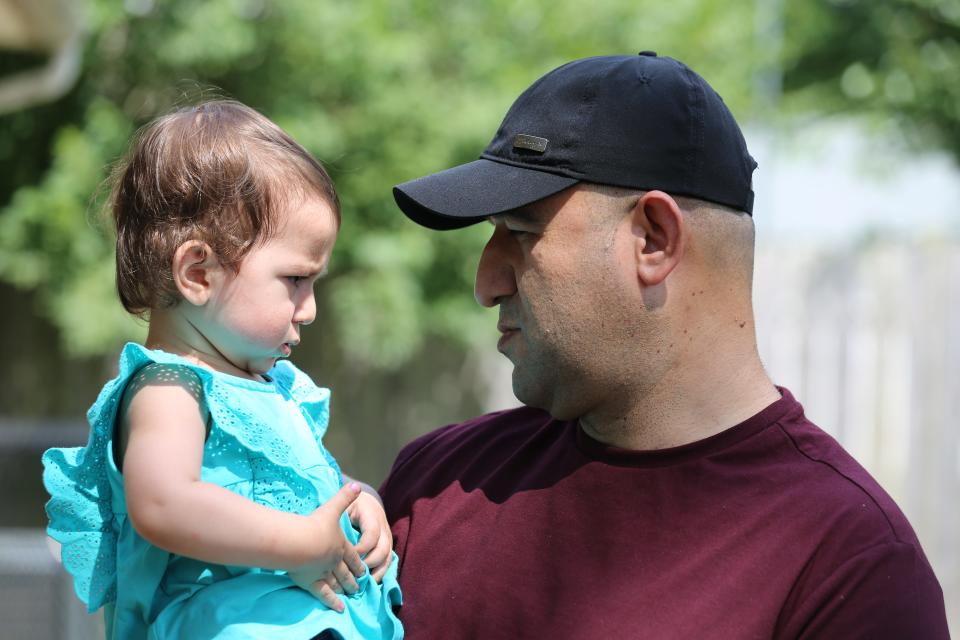
Bedar spent years working for aid and development organizations, including the U.S.-based Asia Foundation and the Danish Agency for International Development Assistance. Under various roles, he helped advise top Afghan government officials and worked on issues from reintegrating militia fighters to reconstruction.
It allowed him to build a nice home in Afghanistan for his family, he said. But one he had to leave that and everything else behind.
He's grateful to the U.S. military for evacuating him, he said, and the chance to reconstruct his own life despite the challenges of a new country. As a priority refugee, he was able to bring his family from Denmark. And he now works at a local refugee resettlement agency, where he helps Afghans and others.
But the prospects for this brother making it here seem distant, he said. Bedar sends him $200 a month to help him and his family to survive. In Kabul, he rarely leaves his house for fear of being detected.
“Each time he doesn't respond to the cellphone, we are worried,” Bedar said.
His brother is waiting for a passport and a marriage certificate. Even then, he lacks the money to travel with his family to another country and start the long process of seeking admittance. Bedar said his brother often asks him to help but there's little he can do.
“If you're in Afghanistan, you have no passport, and there is no U.S. Embassy. ... I mean, it's really really tough,” he said. “I always advise him that he should not lose hope. One way or another, we will find a way.”
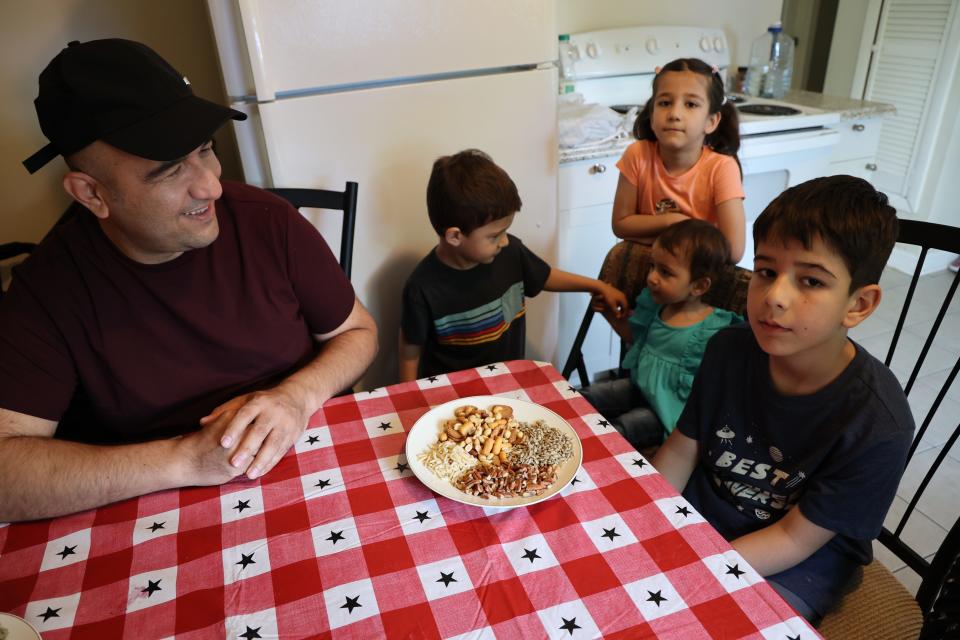
Chris Kenning is a national news writer. Reach him at ckenning@usatoday.com and on Twitter @chris_kenning.
This article originally appeared on USA TODAY: Afghan allies left behind after US withdrawal find hard path to safety

